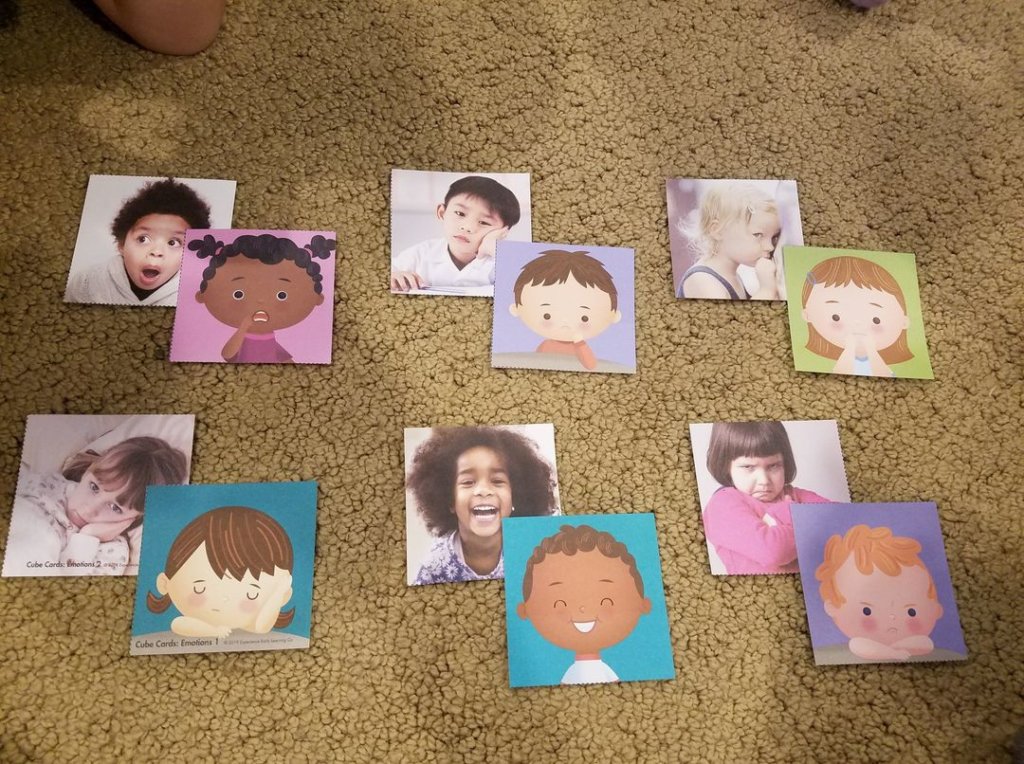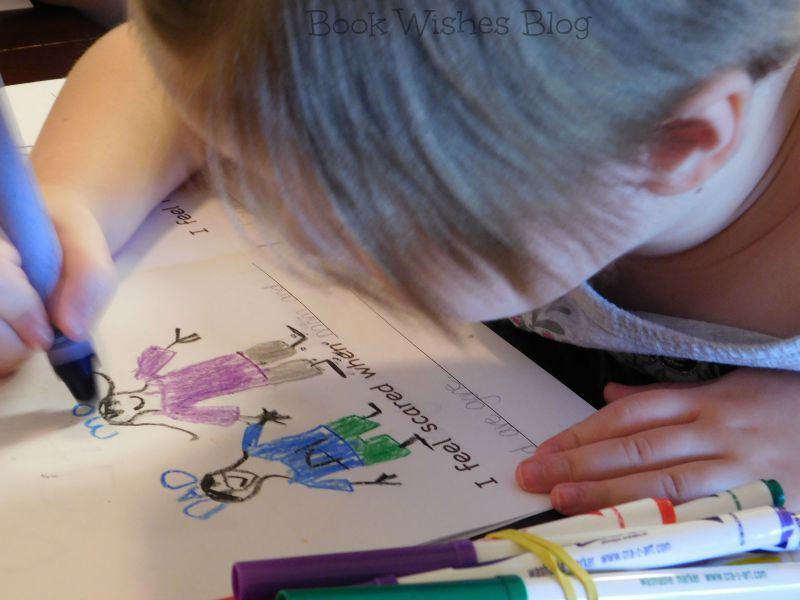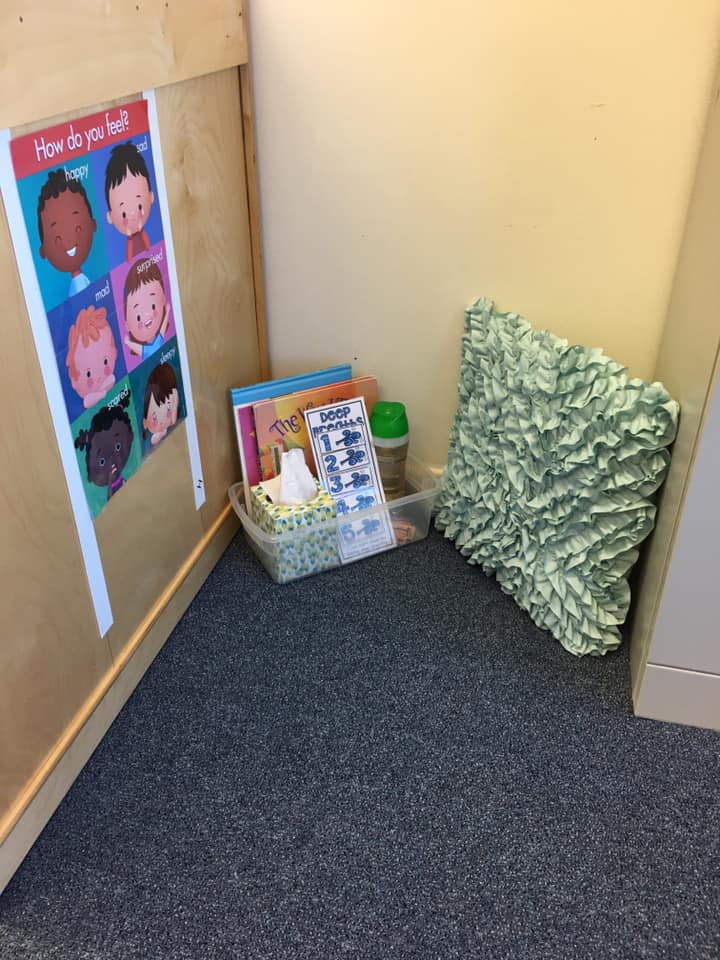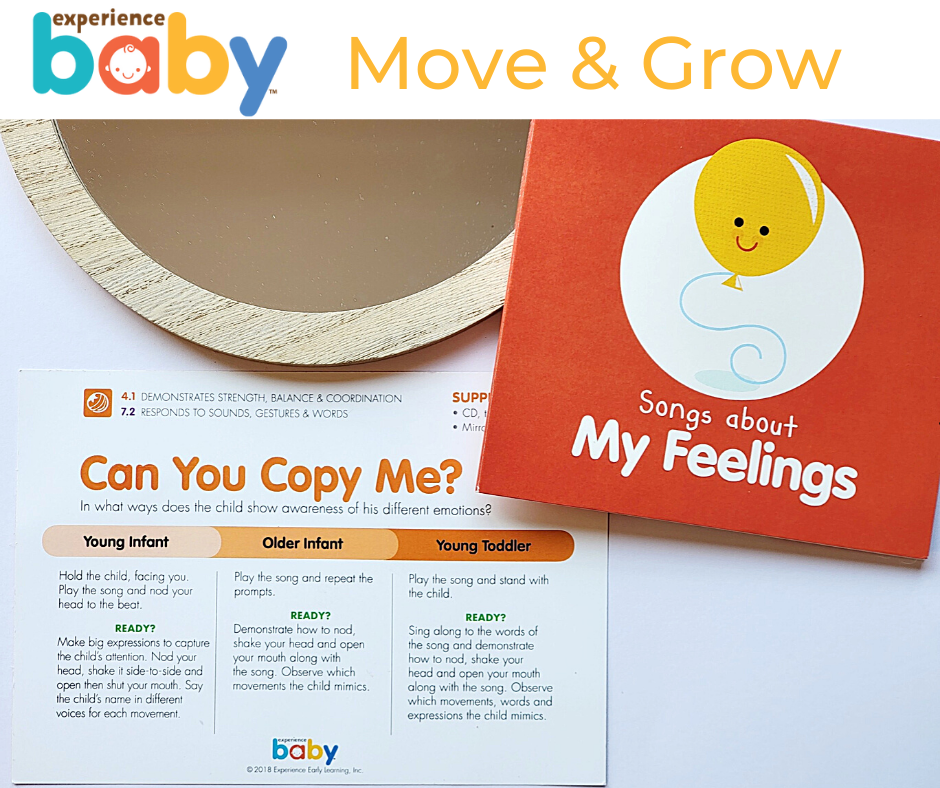The classroom is filled day to day with children and a range of feelings and emotions, some that are voiced and several that go unnoticed. As children experience the classroom including peer interactions, adult-child interactions, exploration of materials, sequence of day and so many others, they need support and space to serve as an outlet for their ideas and emotions.
Educators can support children in managing their emotions, by acknowledging and identifying children’s emotions, helping them with problem-solving through conversation, providing lessons to teach about emotions and offering a calming space for children to actively practice managing their emotions. READ: Positive Guidance: Powerful Interactions Make a Difference
 Acknowledge and Identify Emotions
Acknowledge and Identify Emotions
First, we need to help children identify their emotions. After the process of identifying emotions, children begin to gain skills and the self-regulation strategies needed to manage the way they feel.
Support Children’s Ability to Identify Their Emotions:
Ask children throughout the day how they feel.
Simply ask, “How are you feeling?” or “It looks like you might be feeling upset about something. Tell me about it.”
Talk to children about emotions throughout the day through normal activities. If you are reading a book, label the characters’ emotions and point out their facial expression of the characters in books.
Label and define feelings for children when they do not have the words to express how they are feeling. When you observe a child, you can identify the emotion they are displaying. For example: “It looks like you are frustrated because you can’t get your shoe on.” I can tell you are frustrated because of the look on your face and your voice is getting louder. Let’s make a plan and figure out how you can get help when you are frustrated.”
Talk about your own emotions. For example, “I am feeling happy today because the sun is shining and we’re going to the park!” Direct children to look at your facial expressions and body language. Ask them, “How can you tell I’m feeling happy?”
Respond Positively
Caregivers’ responses to children’s actions, expressions, and needs have an impact on their development. In the beginning, years, as children are gaining an understanding of the world and people around them, every experience, positive or negative adds to knowledge and perception.
Positive Ways to Respond
When children experience strong emotions, it’s important for educators to help children calm down. Until the child is calm, they will not be able to talk about how they are feeling. READ: Emotionally Safe Environments.
- Make a connection. Come close, get on the child’s level.
- Use a kind, pleasant tone of voice and a relaxed body posture and facial expression when you talk with the child.
- Use positive nonverbal communication and body language. Children take cues about how they should feel from adults.
- Be patient while helping the child calm.
- Acknowledge the child’s feelings so they feel accepted and safe.
- Encourage deep breaths, rub the child’s back or sing a song.
Problem-Solve Through Conversation
Encourage children to tell other children how they feel. When they are playing and a problem arises, encourage them to talk to each other about their feelings. This way children can begin to label their feelings, calm down and talk about the problem which will lead to a solution to their problem. Coach children through these situations and encourage them to try it on their own when they come to you for help. Stand by and guide.
Use a Calming Corner
Create a special space for children to go when they realize they need to manage their feelings. This space can allow children to calm themselves with a quiet, soft place to sit and the tools you’ve provided to help them calm and make decisions if necessary.
This quiet space is where a child can choose to go if he or she becomes overwhelmed, upset, or angry, but shouldn’t be used as a consequence or time-out space. Educators may encourage children to go to the calming corner and then guide the child as needed.
Social Emotional Teaching
Social-emotional skills can be taught through daily routines and activities. We must help children develop these skills through repeated and intentional practices. Educators can plan and implement games, dramatic play experiences, and large and small group activities that promote social-emotional development. Experience Early Learning provides many opportunities throughout the curriculum to develop self-awareness, self-regulation, attention and persistence, and social relationships. READ: Teaching Social-Emotional Skills with Forest Friends
Looking for more information on positive discipline and practices? Register for our Positive Discipline: Safe to Make a Mistake training and earn CED hours.



